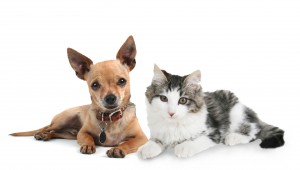Coping with the Loss of a Pet
February 25, 2015The death of a pet can be a devastating loss. More often than not, pets become part of our families and their loss creates a significant impact. Nine out of ten pet owners consider their pet to be a member of their family, according to a 2012 Harris Interactive Poll.
The death of a pet creates similar feelings and emotions as that of the loss of a loved one, including grief, anger, denial, depression and loneliness, but those feelings aren’t always recognized by those around us.
Three types of pet loss grief
 According to Timothy J. O’Brien M.S., author of You will always be a part of me…A Guide & Journal for Grieving the Loss of Your Pet, there are three types of grief surrounding the loss of a pet, including anticipatory grief, disenfranchised grief, and the grief of the actual loss. The compounding of all three types of grief can make the loss of a pet even more difficult to handle.
According to Timothy J. O’Brien M.S., author of You will always be a part of me…A Guide & Journal for Grieving the Loss of Your Pet, there are three types of grief surrounding the loss of a pet, including anticipatory grief, disenfranchised grief, and the grief of the actual loss. The compounding of all three types of grief can make the loss of a pet even more difficult to handle.
Anticipatory grief begins when the Veterinarian gives a terminal diagnosis or when the pet owner begins to consider euthanizing their beloved pet. This is the grief of anticipating the time when the pet will no longer be part of the owner’s life. Disenfranchised grief is felt when friends, family or co-workers dismiss the grief over a pet. They may say, “It’s only a dog” or “You can get another pet.” Pet owners often do not receive the support they need to deal with their grief, leaving them feeling isolated and depressed. Then when their pet is gone, owners are faced with the reality and finality of death and the grief of the actual loss begins.
O’Brien’s guide provides tools such as a relaxation CD and grief journal to help pet owners heal through a three step program. The steps include: rest and relaxation; giving yourself permission to grieve; and adjusting to a new way of life after the loss of a pet.
Resources and tools
If you are experiencing the loss of a pet or any of the three types of grief associated with the loss, there are things you can do and resources to lean on to help support yourself through the grieving process after the death of a pet:
- Remember your pet: There are many ways to remember your pet, including online memorials; photo memory boards; keepsakes containing your pet’s ashes or DNA, such as Pet DNA Memorial; and boxes for storing other keepsakes such as pet tags, toys, and photographs. The Rainbow Bridge, a virtual memorial website and grief support community for departed pets, provides online memorials in which pet owners can upload photographs and memories of beloved pets.
- Honor your pet: Find a way to honor your pet that is meaningful to you – make a donation to a pet shelter; plant a tree in honor of your pet, either in your own garden or through an organization such as Treegivers or the Jewish National Fund; if your pet died of a disease you can make a contribution for a cure.
- Get support: Just as there are support groups for the death of a loved one, there are pet loss support groups, pet loss help hotlines and pet loss communities to help you through the grieving process. For more information on pet loss support, go to the resource page at Rainbow Bridge.
- Take care of yourself: Good self-care is necessary in order to facilitate the grieving process. Get enough sleep, eat well and even take some time off work if needed.
Photo Credit: ©Erik Lam/123RF.COM
For additional help with pet loss, visit the following organizations, blogs and online resources:
Leave a Comment